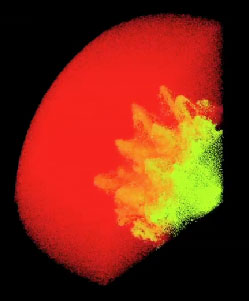 Two University of Texas at Arlington researchers want to bridge the gap between what is known about exploding stars and the remnants left behind thousands of years later. So they're trying something new - using SNSPH, a complex computer code developed at Los Alamos National Laboratory.
Two University of Texas at Arlington researchers want to bridge the gap between what is known about exploding stars and the remnants left behind thousands of years later. So they're trying something new - using SNSPH, a complex computer code developed at Los Alamos National Laboratory.
Jan 9th, 2013
Read more
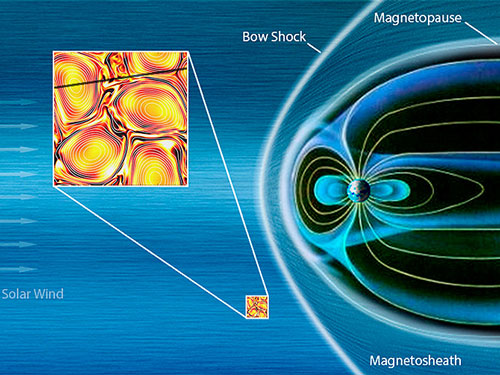 The sun ejects a continuous flow of electrically charged particles and magnetic fields in the form of the solar wind -- and this wind is hotter than it should be. A new study of data obtained by European Space Agency's Cluster spacecraft may help explain the mystery.
The sun ejects a continuous flow of electrically charged particles and magnetic fields in the form of the solar wind -- and this wind is hotter than it should be. A new study of data obtained by European Space Agency's Cluster spacecraft may help explain the mystery.
Jan 9th, 2013
Read more
Where do we come from? What is the universe made of? Will the universe exist only for a finite time or will it last forever? These are just some of the questions that University of California, San Diego physicists are working to answer in the high desert of northern Chile.
Jan 8th, 2013
Read more
Researchers report that - in contrast to the prevailing dogma - sodium levels fluctuate rhythmically with 7-day and monthly cycles. The findings, which demonstrate that sodium is stored in the body, have implications for blood pressure control, hypertension and salt-associated cardiovascular risk.
Jan 8th, 2013
Read more
Using ultrasonic welding, the Electronics Research Laboratory at the University of Helsinki successfully produced a 1 km long ESAIL tether.
Jan 8th, 2013
Read more
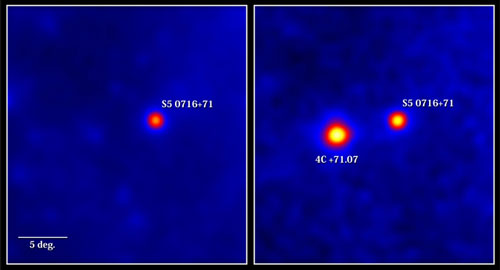 In 2011, a months-long blast of energy launched by an enormous black hole almost 11 billion years ago swept past Earth. Using a combination of data from NASA's Fermi Gamma-ray Space Telescope and the National Science Foundation's Very Long Baseline Array (VLBA), the world's largest radio telescope, astronomers have zeroed in on the source of this ancient outburst.
In 2011, a months-long blast of energy launched by an enormous black hole almost 11 billion years ago swept past Earth. Using a combination of data from NASA's Fermi Gamma-ray Space Telescope and the National Science Foundation's Very Long Baseline Array (VLBA), the world's largest radio telescope, astronomers have zeroed in on the source of this ancient outburst.
Jan 8th, 2013
Read more
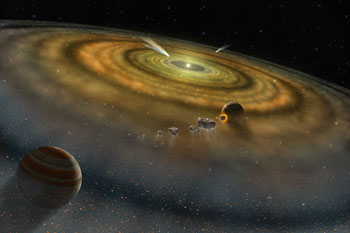 The discovery by astronomers of six likely comets around distant stars suggests that comets - dubbed "exocomets" - are just as common in other stellar systems with planets.
The discovery by astronomers of six likely comets around distant stars suggests that comets - dubbed "exocomets" - are just as common in other stellar systems with planets.
Jan 7th, 2013
Read more
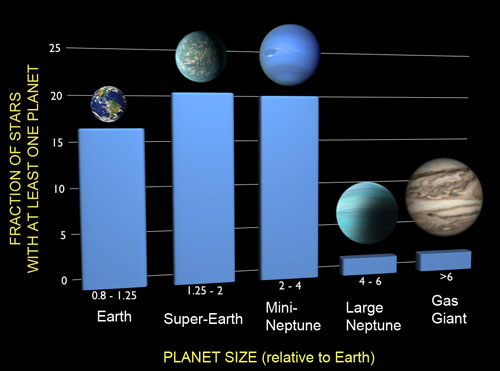 A new analysis of Kepler data shows that about 17 percent of stars have an Earth-sized planet in an orbit closer than Mercury. Since the Milky Way has about 100 billion stars, there are at least 17 billion Earth-sized worlds out there.
A new analysis of Kepler data shows that about 17 percent of stars have an Earth-sized planet in an orbit closer than Mercury. Since the Milky Way has about 100 billion stars, there are at least 17 billion Earth-sized worlds out there.
Jan 7th, 2013
Read more
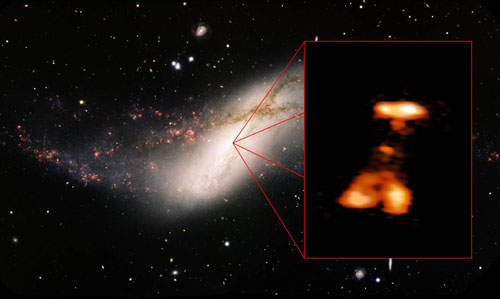 Serendipitous discovery reveals probable belch by a gorging black hole.
Serendipitous discovery reveals probable belch by a gorging black hole.
Jan 7th, 2013
Read more
Volunteers from the Planethunters.org website, part of the Oxford University-led Zooniverse project, have discovered 15 new planet candidates orbiting in the habitable zones of other stars.
Jan 7th, 2013
Read more
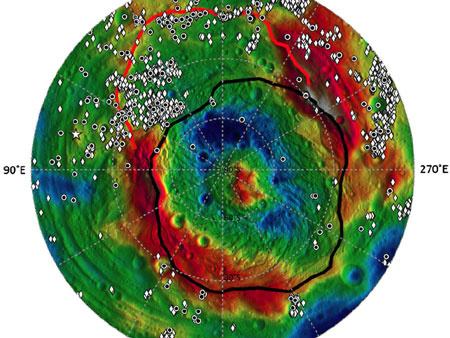 Large impacts of asteroids may have transferred carbonaceous material to the protoplanet and inner solar system.
Large impacts of asteroids may have transferred carbonaceous material to the protoplanet and inner solar system.
Jan 7th, 2013
Read more
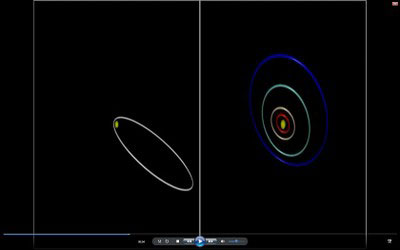 An international team of astrophysicists has shown that planetary systems with very distant binary stars are particularly susceptible to violent disruptions, more so than if they had stellar companions with tighter orbits around them.
An international team of astrophysicists has shown that planetary systems with very distant binary stars are particularly susceptible to violent disruptions, more so than if they had stellar companions with tighter orbits around them.
Jan 6th, 2013
Read more
Astronomers are gearing up for thrills this year when Earth gets buzzed by two rogue asteroids and two comets, including a wanderer last seen by the forerunners of mankind.
Jan 6th, 2013
Read more
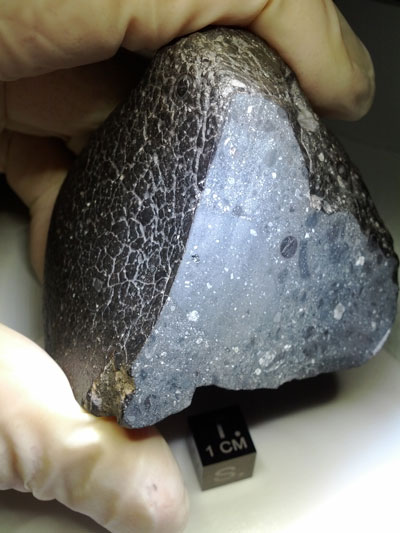 NASA-funded researchers analyzing a small meteorite that may be the first discovered from the Martian surface or crust have found it contains 10 times more water than other Martian meteorites from unknown origins.
NASA-funded researchers analyzing a small meteorite that may be the first discovered from the Martian surface or crust have found it contains 10 times more water than other Martian meteorites from unknown origins.
Jan 4th, 2013
Read more
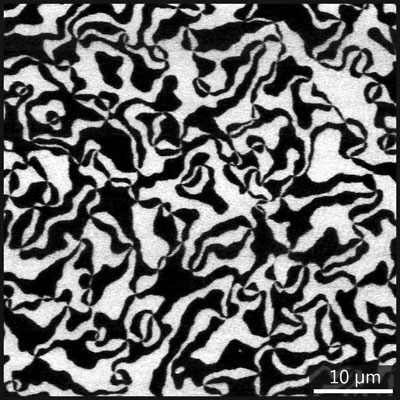 Scientists have replaced the telescope by the microscope: Using the similarities between the structure of a crystal and the state of the cosmos in the early universe, they have explored a yet unconfirmed phenomenon, the formation of cosmic strings. These so-called "topological defects" are believed to have formed as the universe expanded shortly after the Big Bang.
Scientists have replaced the telescope by the microscope: Using the similarities between the structure of a crystal and the state of the cosmos in the early universe, they have explored a yet unconfirmed phenomenon, the formation of cosmic strings. These so-called "topological defects" are believed to have formed as the universe expanded shortly after the Big Bang.
Jan 4th, 2013
Read more
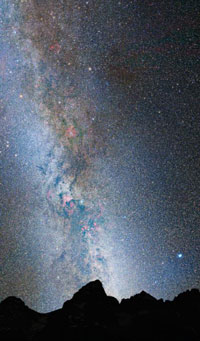 Look up at the night sky and you'll see stars, sure. But you're also seeing planets - billions and billions of them. At least. That's the conclusion of a new study by astronomers at Caltech that provides yet more evidence that planetary systems are the cosmic norm.
Look up at the night sky and you'll see stars, sure. But you're also seeing planets - billions and billions of them. At least. That's the conclusion of a new study by astronomers at Caltech that provides yet more evidence that planetary systems are the cosmic norm.
Jan 3rd, 2013
Read more
A new study observes 13 smaller satellite galaxies orbiting around the immense Andromeda galaxy in a way similar to how the planets in our solar system orbit around the sun. The galaxies are orbiting on a thin, pancake-like plane at a scale 900 million times larger than our own solar system.
Jan 3rd, 2013
Read more
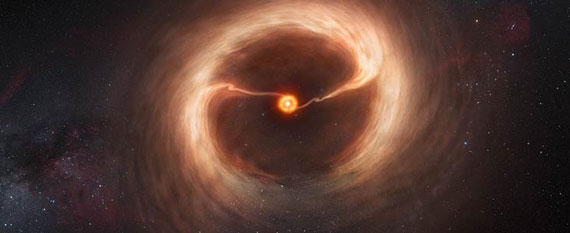 Tantalizing signs of flows feeding gas-guzzling giant planets.
Tantalizing signs of flows feeding gas-guzzling giant planets.
Jan 2nd, 2013
Read more
 Two University of Texas at Arlington researchers want to bridge the gap between what is known about exploding stars and the remnants left behind thousands of years later. So they're trying something new - using SNSPH, a complex computer code developed at Los Alamos National Laboratory.
Two University of Texas at Arlington researchers want to bridge the gap between what is known about exploding stars and the remnants left behind thousands of years later. So they're trying something new - using SNSPH, a complex computer code developed at Los Alamos National Laboratory.
 Subscribe to our Space Exploration News feed
Subscribe to our Space Exploration News feed









